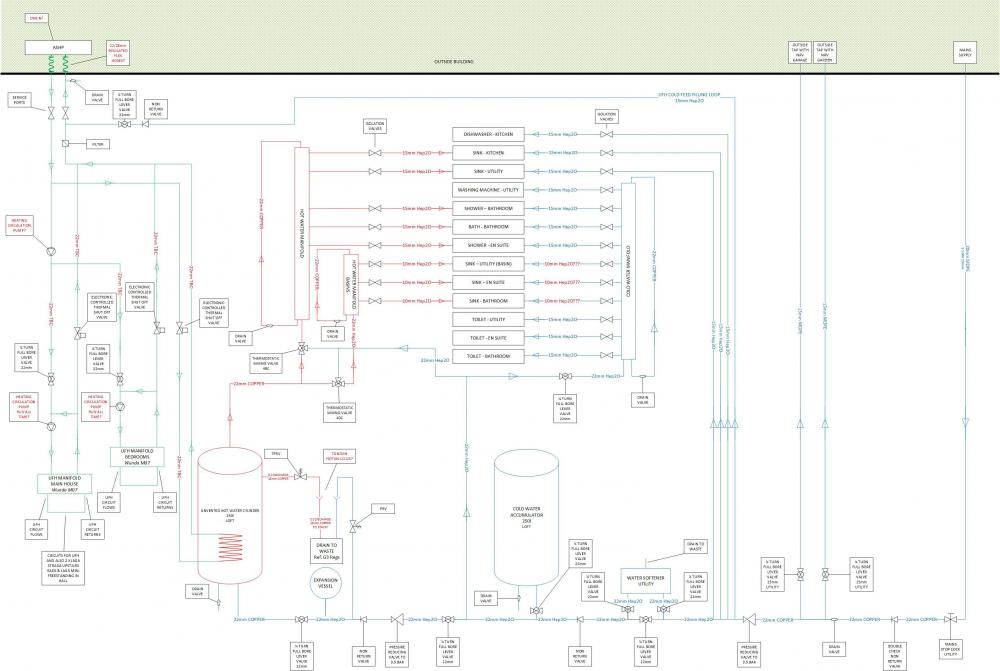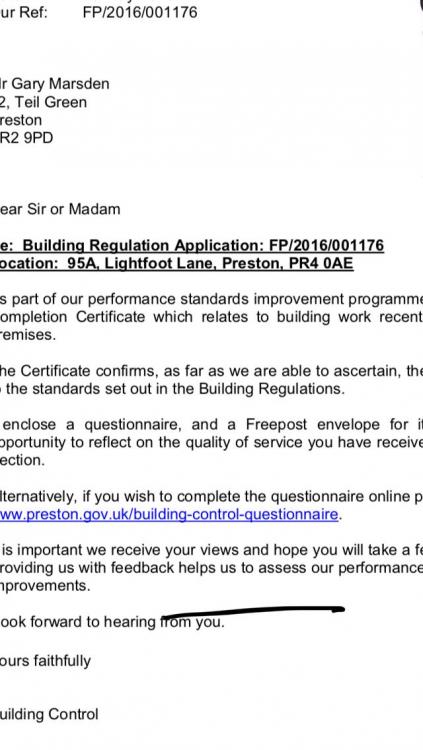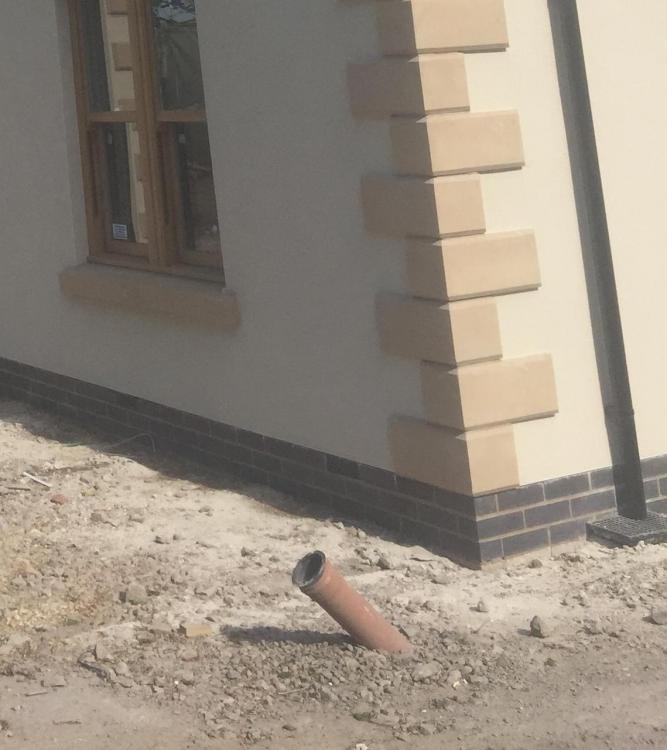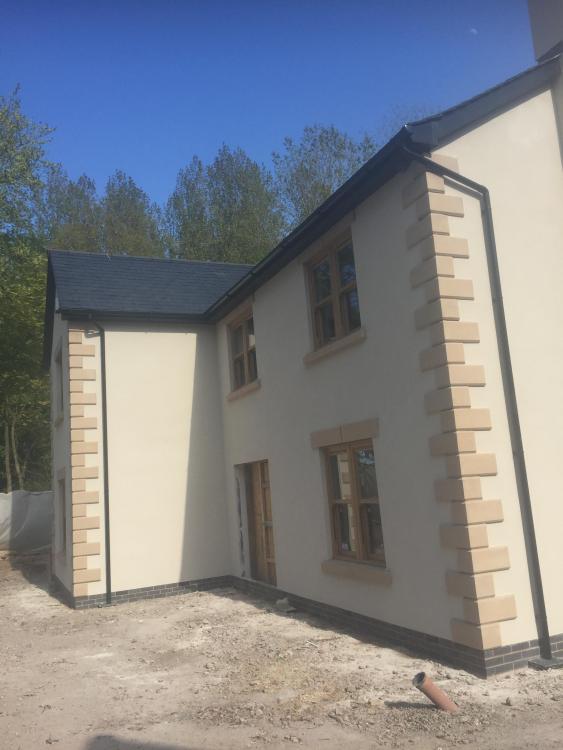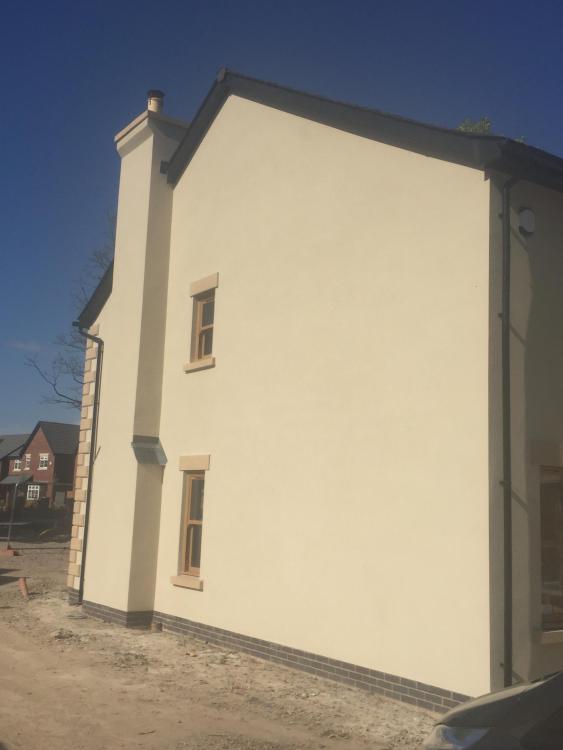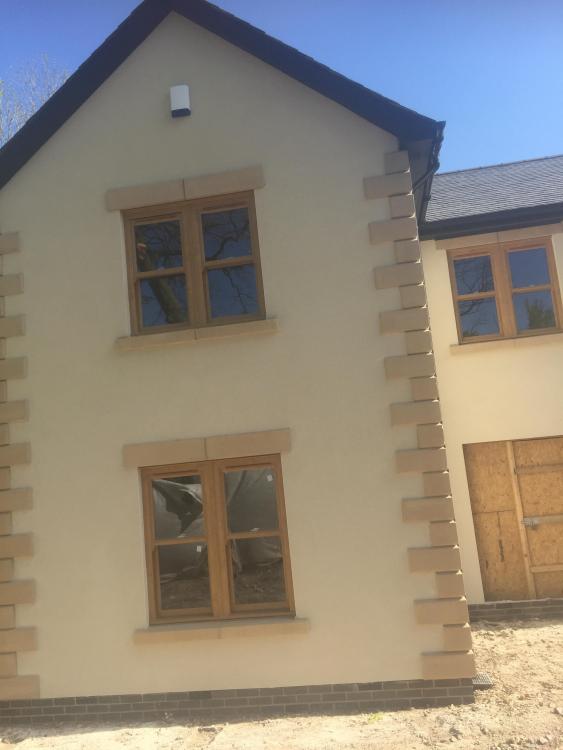Leaderboard
Popular Content
Showing content with the highest reputation on 05/12/19 in Posts
-
Ha, my inspector turned up to introduce himself, was at pains to point out he was not a planner (as they have such a bad rep around here), said it’s clay here innit, and some trees so 800mm deep should be ok.! Dig it out and give me a call, called him and he popped round and said carry on ? he then said as you have the digger on site you could dig a soakaway, I pointed out a soakaway on solid yellow clay was called a Swimming pool!,, and I suggested I piped surface water into the ditch next to it and he agreed, result!2 points
-
Hi all So things move glacially along here. Perhaps we'll actually get the ground works started in July but I am not holding my breath as it was (theoretically) supposed to have been December... But whilst we wait, I've been busying myself with plumbing design, trying to work out what the best option is here and I've come up with the attached so far: I'm quite sure there are numerous things I need to add/remove/correct in it but what I wanted to try and get to was a design that made sense, so I can get a plumber to get me up to AHSP/hot and cold manifold level, so I can do the Hep2O runs to each room as needed. I like @JSHarris idea of having a continually circulating UFH pump but I'm going to have two pumps and linked to this I am also not sure whether to do a single zone per manifold or split them up into zones per room. I think continuous circulation is only sensible if you have a single zone. Again, conscious of following the KISS principal and how far I seem to be deviating from it on this design so far...! My plans for the control system is Loxone but I will need to ensure I have the correct inputs into that e.g. use Loxone switches per room as thermostats to request heating (again makes more sense to have multiple zones then). Or do I just nominate two Loxone switches, one for each manifold and get that to run as required? The house isn't up to passive levels mainly due to the stretched out shape of it but it isn't too far off with 300mm EPS100 on top of beam and block floor and 300mm warmcell filled timber frame walls, 350mm warmcell filled roof. Anyone have any thoughts/corrections on the above? I am also happy to upload the Visio that sits behind this if that is of use to anyone?1 point
-
1 point
-
1 point
-
How many channels do you need ..? If it’s 3 just get a new single clock that does the lot.1 point
-
1 point
-
We had one done recently but it also included a drainage design for a soak away and treatment plant and it was around £1k1 point
-
1 point
-
Exactly what I’m sorting currently ..! But will fully fill them and then put mass concrete around the tops and sides before they are covered over. Can’t see why the steel framed and reinforced ones wouldn’t work.1 point
-
Welcome @Da-Dad. With this sort of query it's well worth saying which country you're in. Building and permitted-development regulations for Scotland and Northern Ireland are very different from those in England and Wales and E&W differ from each other a bit.1 point
-
If it is of any help We had a soil survey and used Geo-smart Which cost £500 two years ago But was significantly lower than other quotes As above Clay and lots of trees mine was in the planning conditions So no choice1 point
-
Hi Tim, We have clad about 1/2 of the external walls with vertical standing seem Tata Colorcoat Urban and did not cut off the external ties. We are going to use Trespa Pura on the remaining 1/2 and don't think we will bother to cut off the ties. We took the view that, particularly with the internal ties cut off, the external ties will make no appreciable impact on thermal bridging and will not interfere with our battens.1 point
-
Hi, we cut off all the internal metal ties on our Velox build using an angle grinder. We then used a face grinder to smooth the corner joints between Velox panels and glued and screwed plasterboard and skimmed. The result is no void between the face of the Velox and the plasterboard and a beautifully smooth plaster surface. Insofar as the metal ties act as a thermal bridge any impact of that has also been minimised.1 point
-
I think I would have a scoping conversation to ask him just what it is that he needs to know, and what it relates to. Examples could be soil type, beating capacity, percolation, contamination, underground gas from the landfill next door etc. You could explain the query as being so that you can properly brief a potential surveyor. That would I think help and is a genuine reason - then come back here and see if there are any good and effective ways to do it . Potentially you could do a test yourself, or modify your design etc. Or indeed ... you may require a full Condition Report. Ferdinand1 point
-
I concur with @Temp, subject to the caveat that if you are in a protected area ... eg Conservation Area, National Park etc, or what is called an "Article 4" area, there may be specific restrictions that require PP. You could ask your Council that. In this case, I would be fairly relaxed about talking to the Council. Even if they operate a "pay to talk to us about a particular case" service, you may be able to smuggle some individual questions into the 'protected area' request. If you are looking for reassurance, you could ask Planning Aid - a service run by the RTPI. But you will need to frame your questions as policy queries, rather than related to your particular case. eg Would Planning Permission be required to change a window to a door on the front of my house? https://www.rtpi.org.uk/planning-aid/ Ferdinand1 point
-
1 point
-
It’s the one I use and as long as you don’t try using 32mm wood augers in the drill it’s fine ...! I’d also grab a couple of decent impact bits as the driver has a tendency to shear off cheap screwdriver bits.1 point
-
1 point
-
1 point
-
I don't know, but adding an EPC requirement to claim the FIT was the most daft thing you could ever imagine. It added a layer of expense and bureaucracy to the process, denied some people who would well benefit for it from having solar PV, and in the case of a new build, meant you could not sign up for the FIT until the house was virtually complete and had a lodged EPC submitted (this is what locked me out because of our slow build) If "they" were really serious about increasing renewable energy take up, they should be removing obstacles, not creating more.1 point
-
Very true, @joe90, we were originally going to install a GSHP (it's on our planning consent) but switched to an ASHP when I looked at the whole life cost, which was astronomical when compared with an ASHP. The cost difference was massive, around £2k for the ASHP versus around £8k for the GSHP (both installed cost). The tiny difference in theoretical efficiency (which almost certainly wouldn't have been real in practice, due to collector loop pump running cost over the year) would never have come close to making up for the massive difference in initial cost, let alone the ongoing servicing cost that a GSHP invariably incurs. We could easily fit three replacement ASHPs over the next 30 years or so and still come out on top, although I don't envisage having to do this, as the ASHP just does it's stuff and works, needing no attention other than cleaning cobwebs out of the grill every year or so..1 point
-
If you read threads on here it appears ASHP,s are a better bet than GSHP,s. I have the room and machines to instal my own GSHP but went with an ASHP (self instal) and it was soooo much easier. I am sure others will chip in soon.1 point
-
We are about to install GS in about 2 months time. My husband is reluctant to dig the trenches and install the pipework himself even though we have the diggers etc., I know you have to be careful when you backfill the pipe in case there are any sharp stones and so sand is put over the pipes. spacing is important too. I did see one bloke who put it in himself somewhere on line and he had trouble with frost, I think he put them too close together and it didn't work. We will get back quite a bit of the money over 7 years from the government, plus it won't cost us £3000.00 a year in oil costs, the new house will be insulated up to the max. Personally I'm all for DIY but in this case not...yes it's expensive, putting in the UFH pipe looks a doddle, so maybe we will attempt that and also the pipework for the MVHR. You also get conflicting advice as to what size boiler, we have been told 8kw/10kw/12/kw and 18kw.....goodness it's a mindfield out there. Gone for the 12kw with an option to switch to a pool if we ever get around to it. 388sq m house but again loads of insulation, fingers crossed it works! Going for straight pipes not slinkies, better we think.1 point
-
Hi Guys and Gals just a quick note here to say that I am builder and have been building with Velox now for nearly 6 Years. I have used it on many new build projects, any questions please don't hesitate to ask or email me (email address removed).1 point
This leaderboard is set to London/GMT+01:00




